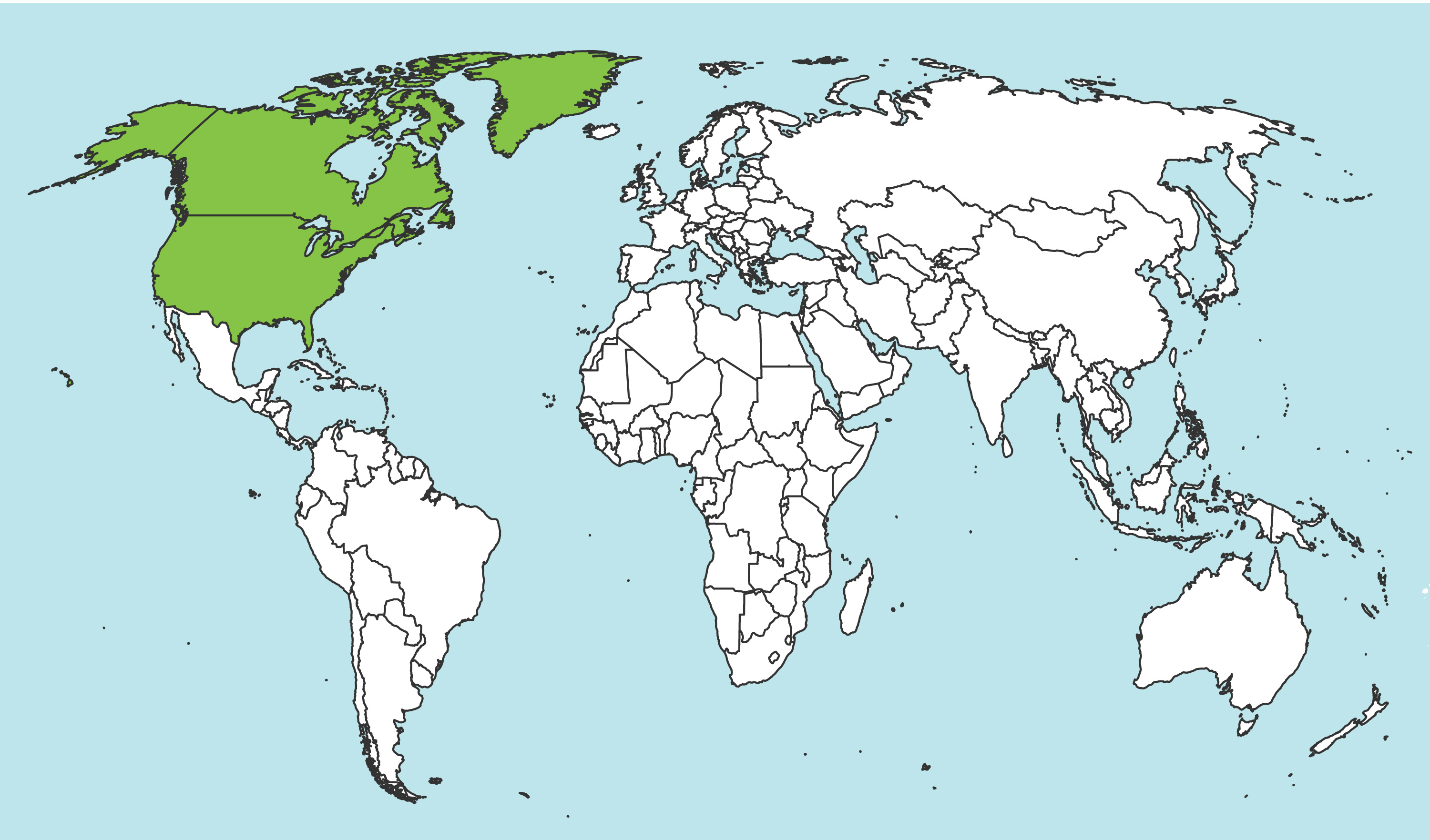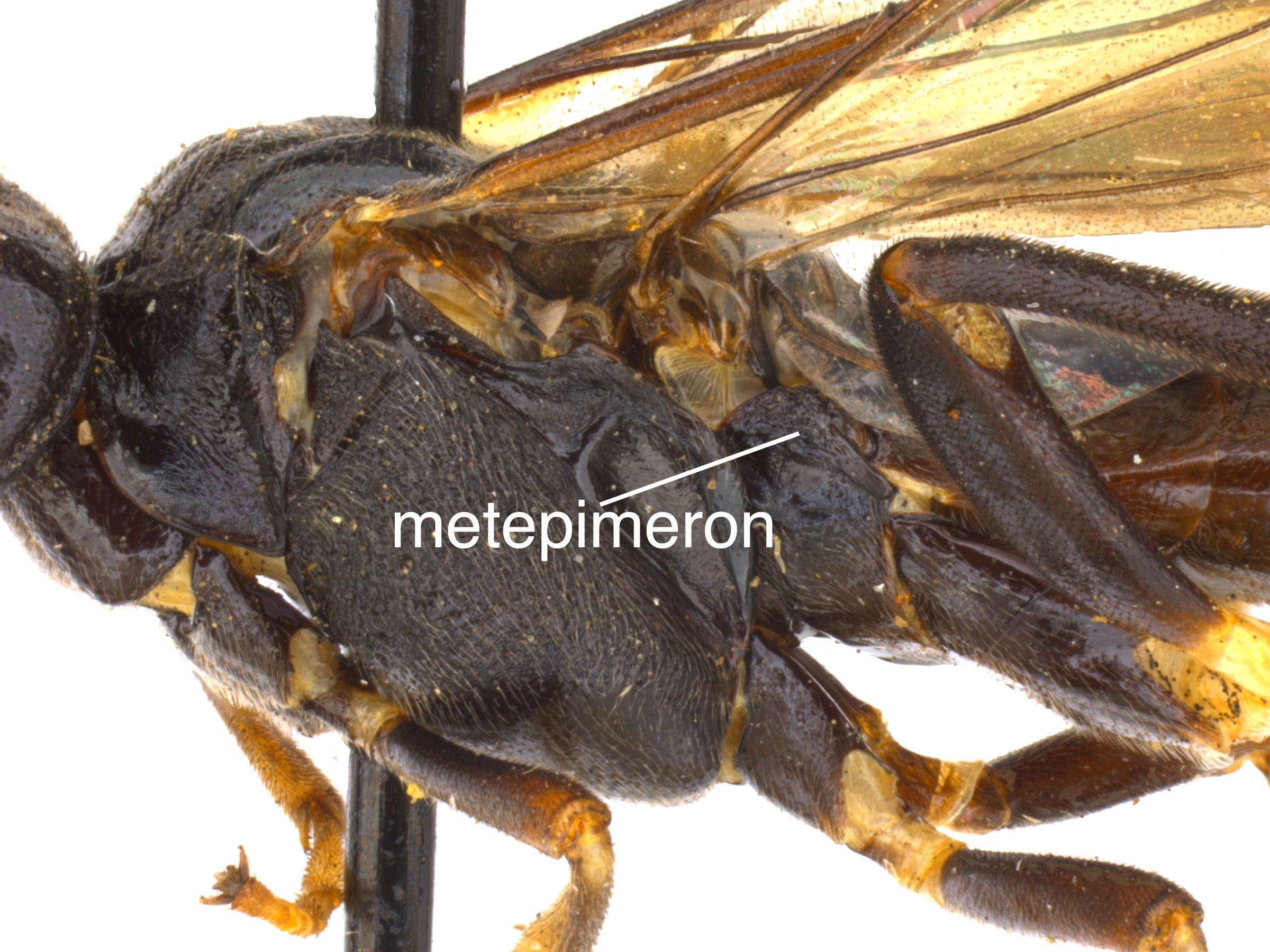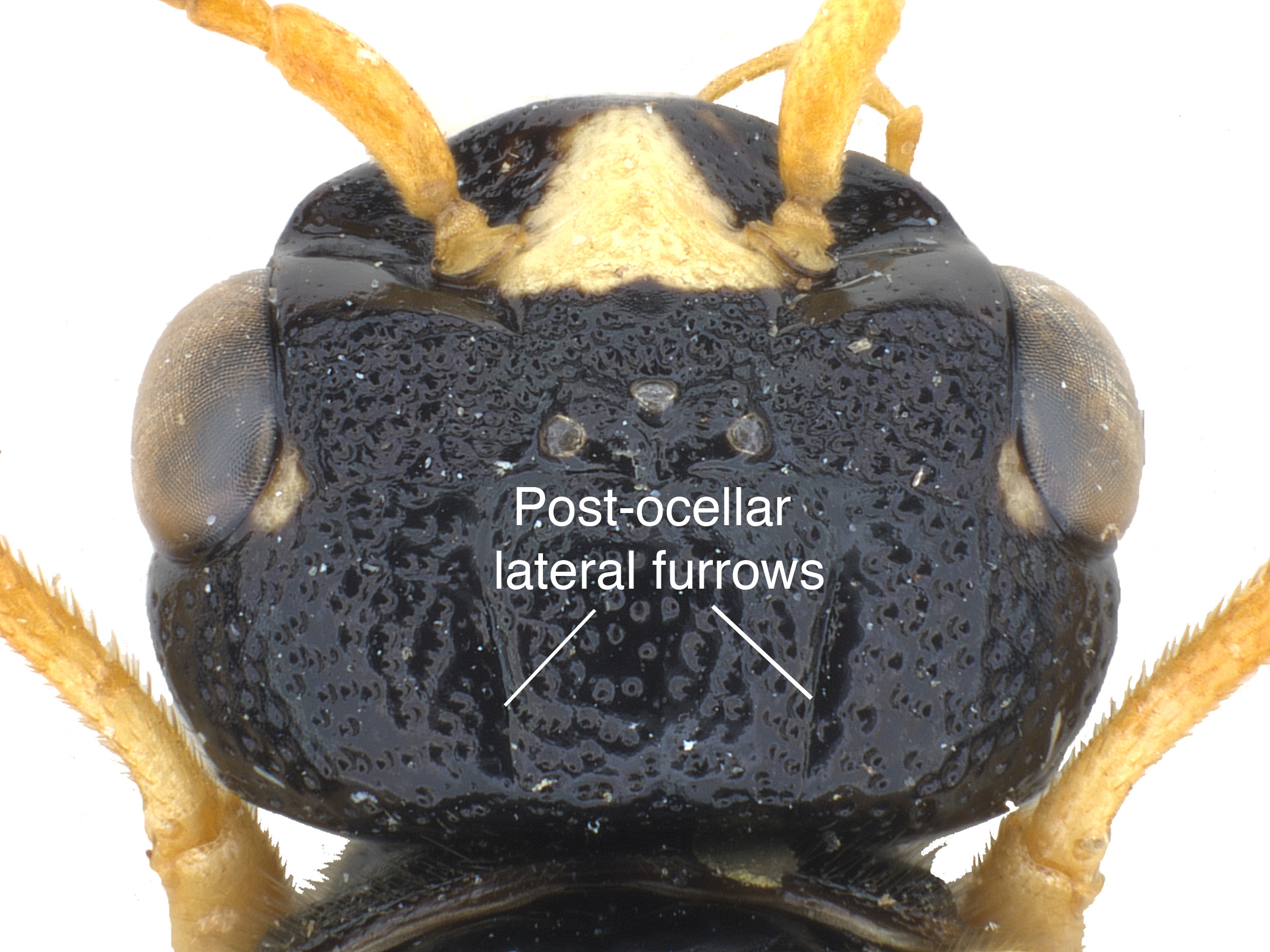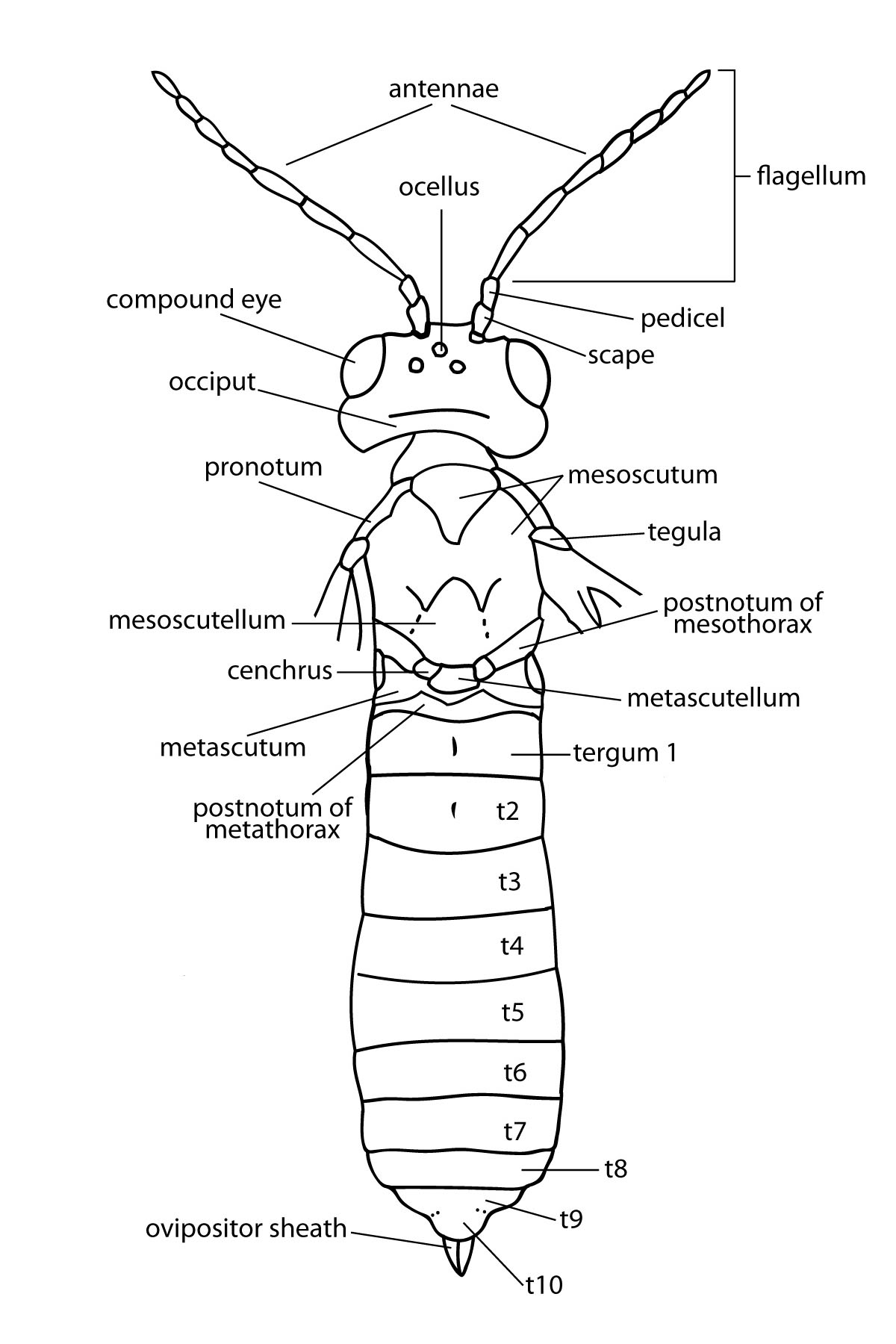Family: Tenthredinidae
Family common name: common sawflies
Subfamily: Tenthredininae
Tribe: Tenthredopsini
Genus: Aglaostigma W.F. Kirby, 1882
Subgenera: Aglaostigma, Astochus, Bivena, Macrophyopsis, Neurosiobla
The Tenthredinidae are the most species-rich family and are found throughout the world, in all continents but Antarctica. They are known as the “common sawflies.” They can generally be recognized by a cylindrical body and long, segmented antennaeantenna:
the sensory organ emerging from the front of the head, usually between the compound eyes and above the clypeus; includes the flagellum, scape and pedicel
 . Otherwise, they come in a variety of colors, sizes, and forms (Goulet 1992Goulet 1992:
. Otherwise, they come in a variety of colors, sizes, and forms (Goulet 1992Goulet 1992:
Goulet H. 1992. The genera and subgenera of the sawflies of Canada and Alaska: Hymenoptera. Symphyta. The insects and arachnids of Canada. Part 20. Agriculture Canada Publication.).
Sawflies in the Tenthredininae subfamily are relatively large compared to others in the family, often with distinct colorful markings. Some are wasp-like with black and yellow stripes (Goulet 1992Goulet 1992:
Goulet H. 1992. The genera and subgenera of the sawflies of Canada and Alaska: Hymenoptera. Symphyta. The insects and arachnids of Canada. Part 20. Agriculture Canada Publication.). Many species’ life histories are not known. Some Tenthredininae species feed uniquely, as adults, on flower pollen and other insects (Smith 1993Smith 1993:
Smith DR. 1993. Systematics, life history, and distribution of sawflies. Pp. 3-32. In: Wagner MR and Raffa KF, eds. Sawfly Life History Adaptations to Woody Plants. University of Minnesota Academic Press. 581 pp.). They can be distinguished from other subfamilies by wing venationvenation:
the network of veins on a wing
(Goulet 1992Goulet 1992:
Goulet H. 1992. The genera and subgenera of the sawflies of Canada and Alaska: Hymenoptera. Symphyta. The insects and arachnids of Canada. Part 20. Agriculture Canada Publication.).
Aglaostigma is a widespread, species-rich, relatively large-sized sawfly. In North America they are often orange or red and black in color (Goulet 1992Goulet 1992:
Goulet H. 1992. The genera and subgenera of the sawflies of Canada and Alaska: Hymenoptera. Symphyta. The insects and arachnids of Canada. Part 20. Agriculture Canada Publication., BugGuide 2019BugGuide 2019:
BugGuide. Accessed January 2019. https://bugguide.net).
There are 56 described extantextant:
in existence; opposite of extinct
species worldwide. Seven species occur in North America (Taeger et al. 2010Taeger et al. 2010:
Taeger A, Blank SM, and Liston AD. 2010. World Catalog of Symphyta (Hymenoptera). Zootaxa 2580: 1-1064.).
An incomplete key to NearcticNearctic:
describing the region of the Northern Hemisphere that includes North America south through northern Mexico
 species is included in Ross 1943aRoss 1943a:
species is included in Ross 1943aRoss 1943a:
Ross HH. 1943a. The Nearctic sawflies of the genus Aglaostigma . (Hymenoptera). Proceedings of the Entomological Society of Washington 45 (4): 79-84..
Subfamily characters
 vein M and 1m-cu parallel (Goulet 1992Goulet 1992:
vein M and 1m-cu parallel (Goulet 1992Goulet 1992: vein R bent at basebase:
vein R bent at basebase: Sc (Goulet 1992Goulet 1992:
Sc (Goulet 1992Goulet 1992: separated from metepisternummetepisternum:
separated from metepisternummetepisternum: by distinct furrowfurrow:
by distinct furrowfurrow: (Goulet 1992Goulet 1992:
(Goulet 1992Goulet 1992:Genus characters
 margin straight (Goulet 1992Goulet 1992:
margin straight (Goulet 1992Goulet 1992: ridge (Goulet 1992Goulet 1992:
ridge (Goulet 1992Goulet 1992: vein M intersecting Sc+R basalbasal:
vein M intersecting Sc+R basalbasal: veins 1m-cu and Cu1 120°–150° (Goulet 1992Goulet 1992:
veins 1m-cu and Cu1 120°–150° (Goulet 1992Goulet 1992: vein 2A+3A complete, connected to 1A by crossveincrossvein:
vein 2A+3A complete, connected to 1A by crossveincrossvein: anal crossveinanal crossvein:
anal crossveinanal crossvein: vein 2r present (Goulet 1992Goulet 1992:
vein 2r present (Goulet 1992Goulet 1992: distinctly angled on lower posterior corner (Goulet 1992Goulet 1992:
distinctly angled on lower posterior corner (Goulet 1992Goulet 1992:Aglaostigma can be confused with similar species in the subfamily Tenthredininae. It can be distinguished from most other genera by the angle on the posteroventralposteroventral:
describes location towards the back on the underside of the body; posterior and ventral
area of the metepimeronmetepimeron:
the dorsal portion of the metapleuron
 and lack of an occipitalocciput:
and lack of an occipitalocciput:
the posterior surface of the head
 ridge (Goulet 1992Goulet 1992:
ridge (Goulet 1992Goulet 1992:
Goulet H. 1992. The genera and subgenera of the sawflies of Canada and Alaska: Hymenoptera. Symphyta. The insects and arachnids of Canada. Part 20. Agriculture Canada Publication.).
none
Aglaostigma in North America feed on a variety of plants from different families, including Sambucus (elderberry) (Smith and Middlekauff 1987Smith and Middlekauff 1987:
Smith DR and Middlekauff WW. 1987. Suborder Symphyta. In: Stehr FW ed. Immature Insects. Kendall/Hunt Publishing Company. Vol. 1: 754 pp.) and Galium (bedstraw) (Goulet 1992Goulet 1992:
Goulet H. 1992. The genera and subgenera of the sawflies of Canada and Alaska: Hymenoptera. Symphyta. The insects and arachnids of Canada. Part 20. Agriculture Canada Publication.). Aglaostigma semiluteum is known to feed on Impatiens (jewelweed), including I. capensis (orange jewelweed), and A. quattuordecimpunctatum is known to feed on Podophyllum peltatum (mayapple) (Smith 2006eSmith 2006e:
Smith DR. 2006e. Superfamilia Tenthredinoidea. In: Fern aacute; ndez F and Sharkey M, eds. Introduccion a los Hymenoptera de la Region Neotropical. Universidad Nacional de Colombia., Pickering 2009Pickering 2009:
Pickering J. 2009. Database of Hymenoptera in America north of Mexico. Proceedings of Life. http://www.discoverlife.org/proceedings/0000/6, Smith and Strazanac 2016Smith and Strazanac 2016:
Smith DR and Strazanac JS. 2016. Annotated list of West Virginia sawflies (Hymenoptera: Symphyta). Proceedings of the Entomological Society of Washington 118 (4): 602-616. http://doi.org/10.4289/0013-8797.118.4.602).
unknown
World: This genus is widespread and known from North America, Europe, North Africa, and Asia (Taeger et al. 2010Taeger et al. 2010:
Taeger A, Blank SM, and Liston AD. 2010. World Catalog of Symphyta (Hymenoptera). Zootaxa 2580: 1-1064.).
North America: North American Aglaostigma species are split into two general ranges. The western range includes California, British Columbia, Idaho, Nevada, Oregon, and Washington, and the eastern includes New England, Quebec, Ontario, New York, Pennsylvania, Maryland, Ohio, Iowa, Illinois, North Carolina, and Virginia (Ross 1943aRoss 1943a:
Ross HH. 1943a. The Nearctic sawflies of the genus Aglaostigma . (Hymenoptera). Proceedings of the Entomological Society of Washington 45 (4): 79-84.).
Map data from: GBIF.org (29 October 2019) GBIF Occurrence Download Aglaostigma
Details about data used for maps can be found here.